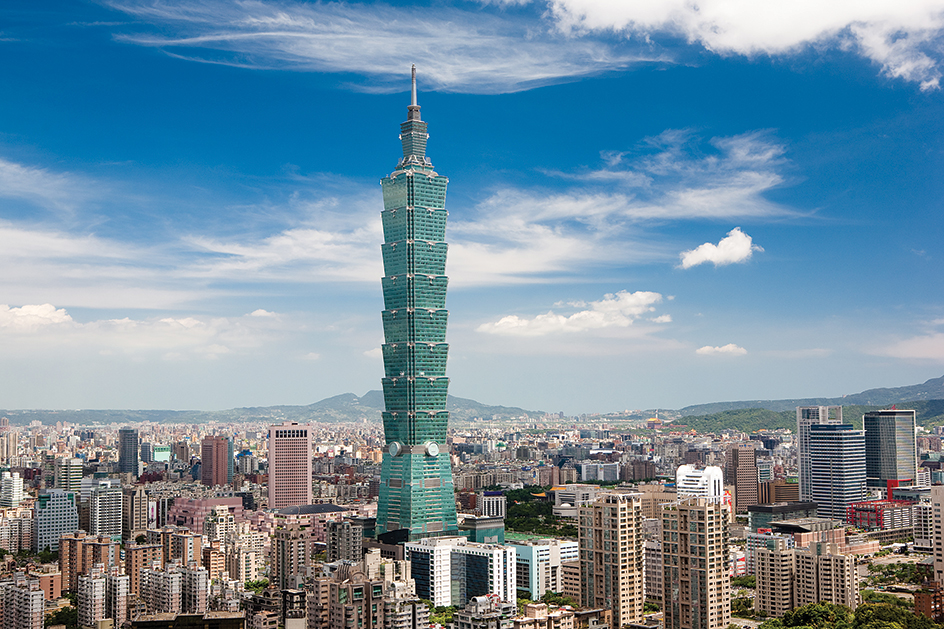Taipei 101, in Taipei, Taiwan, ranks as one of the world’s tallest buildings. It was the tallest building in the world from 2004—when it opened—to 2010. The Burj Khalifa in Dubai, completed in 2010, is much taller. The name Taipei 101 refers to the fact that the building has 101 stories above ground. The building is 1,677 feet (508 meters) tall. It was designed by the Chinese architect C. Y. Lee and cost $1.8 billion to complete. It is sometimes called the Taipei World Financial Center.

Taipei 101 is wrapped in a mix of green glass and aluminum panels. The building’s shape resembles both a stalk of bamboo and a pagoda, a type of tower commonly associated with Buddhist temples. The building’s outer face is decorated with a number of symbols associated with good fortune, such as coins and money boxes.
Taipei 101 was built in an area where earthquakes and typhoons are common. Engineers had to make certain that the building’s foundation and structural frame were sturdy enough to withstand the associated forces. Like other skyscrapers, Taipei 101 is designed to sway—rather than break—under the influence of strong forces. The building uses a huge hanging steel sphere, called a tuned mass damper, to further control its sway. The sphere weighs 730 tons (660 metric tons). It hangs like a pendulum in the center of the building between the 92nd and 87th floors. In case of violent wind or earthquakes, the sphere’s weight helps stabilize the skyscraper’s swaying motions.
